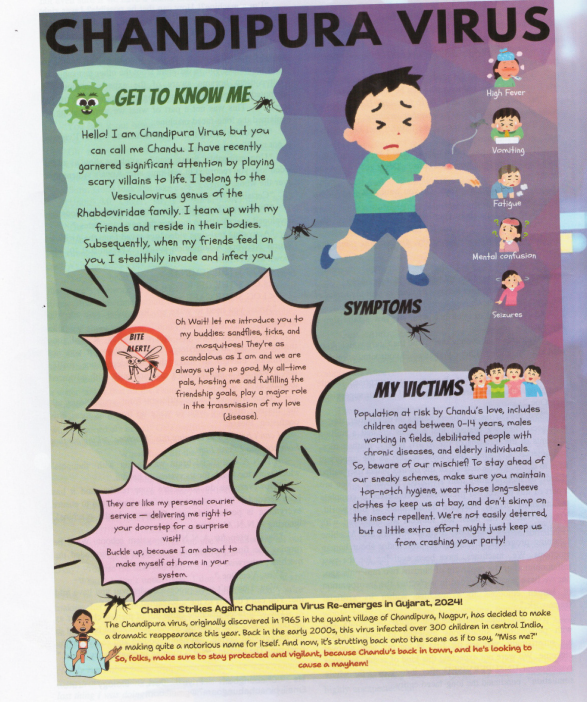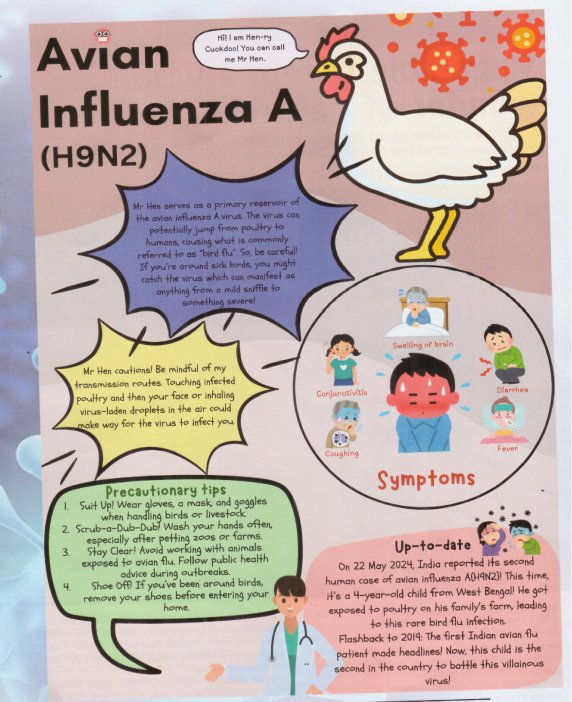SCIENCE REPORTER SUMMARY: SEPTEMBER 2024
ARTICLE 1
Curtain Raiser for Global Bio-India 2024 Launched by Union Minister Dr Jitendra Singh: A Strategic Initiative to Propel India’s Bioeconomy

Launch of Global Bio-India 2024 Curtain Raiser
- On August 14, 2024, Dr. Jitendra Singh, the Hon’ble Union Minister for Science and Technology, unveiled the curtain raiser for the 4th edition of Global Bio-India 2024 at the National Media Centre in New Delhi.
- Organized by the Department of Biotechnology (DBT) in collaboration with the Biotechnology Industry Research Assistance Council (BIRAC), this international event is positioned as a key meeting point for biotech stakeholders from India and around the world.
India’s Growing Bioeconomy
- During the event, Dr. Singh underscored the transformative potential of biotechnology, identifying it as the driving force behind the next industrial revolution.
- He highlighted the impressive growth of India’s bioeconomy, which has expanded from $10 billion in 2014 to over $130 billion in 2024, marking a 13-fold increase.
- With continued advancements and strategic initiatives such as Global Bio-India, the bioeconomy is projected to reach $300 billion by 2030.
A Global Platform for Biotechnology
- Global Bio-India 2024 aims to position India as a key player in the global biotechnology arena.
- The event will attract global leaders, industry experts, researchers, and policymakers to discuss emerging trends, foster collaborations, and explore partnerships that can further accelerate growth in biotechnology.
- By showcasing India’s biotech advancements, the event seeks to enhance the country’s global standing in this critical field.
India’s Rising Biomanufacturing Capabilities
- Dr. Singh noted that India ranks third in the Asia-Pacific region and 12th globally in biomanufacturing capabilities.
- He credited DBT and BIRAC for their efforts in fostering innovation and supporting the growth of biotechnology companies in the country.
- Initiatives like Global Bio-India are critical to driving India’s bioeconomy and ensuring the nation’s role in shaping the future of global biotechnology.
India’s Strategic Role in Biotechnology
- As biotechnology increasingly addresses global challenges in healthcare, agriculture, and sustainability, India’s growing expertise and strategic initiatives will help the country emerge as a global leader.
- Events like Global Bio-India exemplify India’s commitment to advancing biotechnology and contributing to solutions for global challenges.
ARTICLE 2
Beauty and the Beast: Nerium oleander

The Toxicity of Nerium Oleander
- Nerium oleander, a common ornamental shrub found across various regions, including the Mediterranean, northern Africa, and India, has recently gained attention for its highly toxic properties.
- Known for its cardiotoxic effects, the plant contains cardiac glycosides, including oleandrin and nerine, which inhibit the sodium-potassium pump in humans and animals.
- This disruption leads to electrochemical imbalances, impacting the heart, liver, lungs, kidneys, and nervous system, and can even result in death.
- Both the red and yellow varieties of oleander possess toxic compounds, with the red-flowered variant being more poisonous due to higher cardenolide production during flowering.
Impact on Animals and Humans
- Oleander poisoning affects a wide range of species, including cattle, goats, horses, and humans. The plant’s toxins are highly fat-soluble, allowing for rapid absorption and slow excretion, which increases its potency.
- Even small amounts of the plant—just 0.05% of an animal’s body weight—can be fatal. Studies show that cattle consuming dried oleander leaves can die within 48 hours, with toxins potentially transferring into their milk, posing risks to human consumers.
- In humans, a fatal dose of oleandrin can cause death with blood concentrations around 20 ng/ml, with symptoms like vomiting, nausea, and paralysis marking the onset of poisoning.
Oleandrin in Medicine and Research
- Despite its toxicity, oleandrin from Nerium oleander has been used in traditional medicine for centuries.
- It has applications as an abortifacient, in treating heart failure, leprosy, and even as a potential cancer treatment.
- Recent research has also explored its antiviral properties, especially during the COVID-19 pandemic.
- Improving the water solubility and reducing the toxicity of oleandrin could unlock new possibilities for developing drugs that harness its beneficial properties while minimizing the risks.
Need for Further Research
- Current studies suggest that oleander poisoning may be time-sensitive, with the time of ingestion impacting its toxicity. Mice and humans consuming the plant during specific light phases were more sensitive to its effects.
- These findings point to the need for further research into how physiological factors, like light and temperature, affect oleander toxicity.
- Understanding these factors could improve treatment methods and help develop safer medicinal applications of oleandrin.
ARTICLE 3
Sustainable Farming with ‘E Soil’
Growing Population and Depleting Arable Land
- The global population is rising, putting immense pressure on agricultural systems to meet the increasing demand for food. Desertification and the depletion of arable land per person are escalating, leading to reduced agricultural output.
- To address hunger and malnutrition, traditional farming methods are proving inadequate. Scientists are now developing new agricultural techniques to increase food production, and one such innovation is the creation of an electrically conductive soil.
- This new soil has demonstrated the potential to boost barley seedling growth by 50% within just 15 days, marking a significant improvement over traditional and even soilless farming methods like hydroponics.
Hydroponics: A Soil-less Cultivation Method
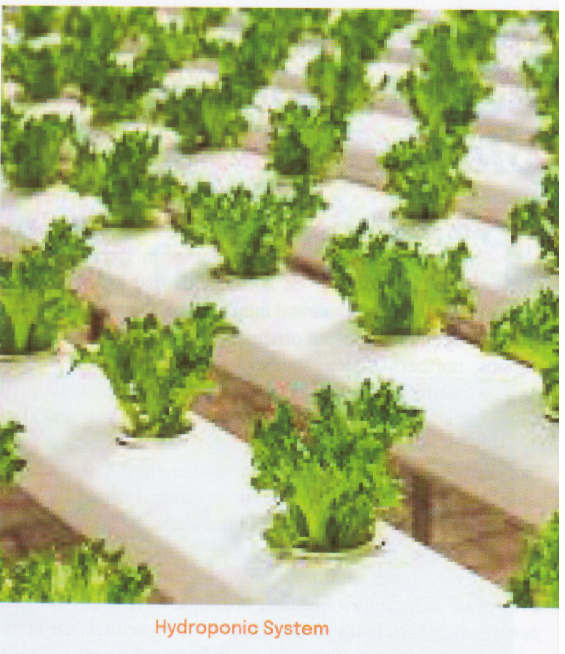
- Hydroponics is a method where plants grow without soil, relying only on water, nutrients, air, and sunlight. A supporting substrate helps anchor the plant roots, while an enclosed system ensures efficient water recycling and nutrient delivery.
- The pH level is carefully controlled (usually between 6 and 6.5), oxygen is provided either through an airy environment or oxygenated water, and nutrients are tailored to the plant type. Common substrates include materials like vermiculite, perlite, and coconut fibers. Hydroponics is highly efficient, using 98% less water, requiring fewer resources, and enabling year-round crop cultivation in various settings, including urban environments. The method reduces crop maturation time by 25% and enhances yields compared to traditional soil-based farming. Popular crops grown hydroponically include strawberries, tomatoes, lettuce, and spinach.
The Advent of Electronic Soil (E-Soil)
- The latest advancement in hydroponics comes from scientists at Linköping University, Sweden, who developed a revolutionary “electronic soil” or “e-soil.”
- This electrically conductive cultivation substrate significantly enhances plant growth. In experiments, barley seedlings showed 50% more growth within 15 days when grown in e-soil.
- This new substrate builds on traditional hydroponics by incorporating electrical stimulation, which boosts plant growth and nitrogen processing, although the exact biological mechanisms remain unclear.
E-Soil: A Sustainable Alternative
- Traditional hydroponics often uses mineral wool as a substrate, but this material is non-biodegradable and energy-intensive to produce. In contrast, e-soil, made from cellulose and a conductive polymer called PEDOT, is a more sustainable alternative.
- It requires less energy and avoids high-voltage hazards, making it a safer and more environmentally friendly option.
- Experts in this development, believes that e-soil could be pivotal in advancing sustainable hydroponics, particularly in areas with limited arable land and harsh climates, helping to address global food shortages.
ARTICLE 4
Need to Safeguard Great Indian Bustard

The Decline of the Great Indian Bustard Population
- The Great Indian Bustard (Ardeotis nigriceps), once widespread across 11 Indian states and parts of Pakistan, now faces an extremely small global population of fewer than 140 individuals.
- This alarming decline is attributed to various factors, including habitat loss and human activities. In 1969, the population was estimated at 1,260, but by 2008, this number had dropped to 300.
- Presently, the species is largely confined to Rajasthan, particularly in the Desert National Park, and a smaller population persists in the Rann of Kutch in Gujarat.
- The Desert National Park, established in 1981, plays a critical role in providing sanctuary for these birds and other wildlife, although the Great Indian Bustard remains critically endangered.
Habitats and Characteristics of the Great Indian Bustard
- The Great Indian Bustard is a majestic bird of grasslands, known for its large size, standing over one meter tall and weighing more than 15 kg. Adapted to arid and semi-arid grasslands, these birds favor flat open landscapes and avoid visual hindrances.
- They need diverse microhabitats, such as tall grass for nesting and short grass for displays, and gather in undisturbed grassland patches during mid-summer and monsoon seasons for breeding.
- These birds are known to lay only one or two eggs annually, making their reproduction rate very slow. Their natural habitats have been severely affected by agricultural expansion, mechanized farming, and industrial development, further threatening their survival.
Conservation Challenges and Initiatives
- The rapid decline of the Great Indian Bustard population is due to habitat loss, changing crop patterns, and a lack of community support.
- The presence of free-ranging dogs, infrastructure development, and high-tension power lines near their habitat has also contributed to their vulnerability.
- In response to these threats, the Rajasthan government launched “Project Great Indian Bustard” in 2013, aiming to conserve the remaining population. The birds are protected under India’s Schedule-1 of the Wildlife (Protection) Amendment Act of 2002, and measures have been taken to prevent collisions with power lines, such as installing bird diverters ordered by the Supreme Court in 2021.
Conservation Breeding Program and Future Prospects
- In 2018, a conservation breeding agreement was signed between the Ministry of Environment, Forest and Climate Change, the Rajasthan Forest Department, and the Wildlife Institute of India, with technical support from the International Fund for Houbara Conservation (IFHC) in Abu Dhabi.
- The program, initiated in 2019, involved collecting eggs from the wild and hatching them artificially at a dedicated center in the Sam Forest Chowki outside Desert National Park.
- The first chick, named “UNO,” hatched in June 2019. By the end of the year, eight more chicks had hatched, and the program achieved a significant milestone when a captive-reared bird successfully bred naturally in 2023.
- Scientists are hopeful that more birds will begin breeding in the coming years, with the aim of establishing a founder population of at least 20 breeding females and 5–10 breeding males.
ARTICLE 5
Safeguarding the Maritime Environment for a Sustainable Future
The History of Maritime Transport


- Shipbuilding, one of humanity’s oldest engineering achievements, has evolved over millennia, showcasing human ingenuity and technological progress.
- From ancient rafts to modern supertankers, civilizations such as the Egyptians, Phoenicians, and Vikings made significant contributions to maritime innovation, using ships for trade, exploration, and empire-building.
- India’s shipbuilding legacy is exemplified by the famous “Urus” ships from Beypore. The Age of Exploration in the 15th to 17th centuries and the Industrial Revolution brought major advancements, including steam power and iron hulls.
- The 20th century saw containerization revolutionize shipping efficiency, transforming global trade.
Human Conquest of the Planet and Transportation
- Humans (Homo sapiens) are unique in their ability to explore and conquer every part of the Earth. This drive to explore has led to advancements in transportation, which is key to global connectivity.
- From ancient footpaths to modern highways, railways, and air routes, transportation has evolved significantly, enabling humans to overcome geographical barriers.
- Among various modes, maritime transport plays a critical role, being the most cost-effective method for moving over 80% of global trade by volume and 70% by value.
- This makes maritime transport indispensable for international trade, allowing the movement of raw materials, finished goods, and energy resources across countries.
Economic and Social Impact of Maritime Transport
- Maritime transport supports the global economy by lowering trade costs, which makes goods more affordable for consumers worldwide. The economies of scale achieved by large vessels reduce transportation costs, promoting higher living standards.
- Developing maritime infrastructure, such as ports and shipyards, stimulates economic growth, particularly in coastal regions, by attracting investment and creating employment.
- Moreover, luxurious cruise ships have further contributed to economic sectors like tourism and hospitality, while innovations in navigation technologies ensure safe maritime operations.
- Ports act as economic hubs, strengthening a nation’s trade capacity and increasing participation in global markets.
Environmental Impact of Maritime Transport
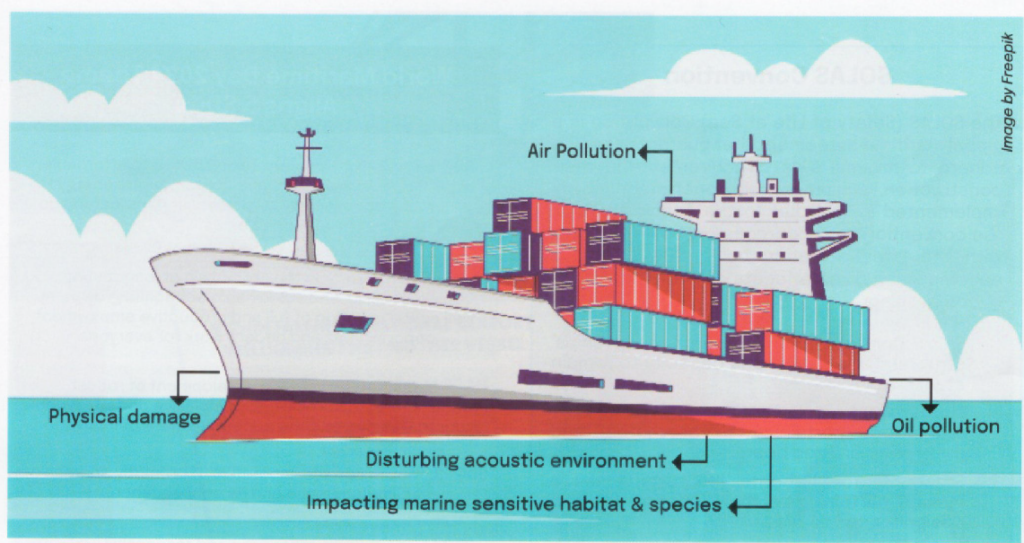
- While maritime transport is vital to the global economy, it poses significant risks to marine biodiversity. Physical damage from ship strikes, anchoring, and dredging activities can destroy sensitive habitats like coral reefs and seagrass beds, leading to habitat degradation.
- Noise pollution from ship engines disrupts marine animals, particularly cetaceans, which rely on sound for communication and navigation.
- Furthermore, oil pollution, like the infamous Torrey Canyon disaster of 1967, has long-term catastrophic effects on marine ecosystems. The International Maritime Organization (IMO) has implemented the MARPOL Convention to regulate oily waste discharge, but concerns about marine pollution remain.
Ballast Water and Invasive Species
- Ballast water used to stabilize ships often introduces non-native species to new environments, causing significant ecological imbalances. Organisms transported through ballast water can outcompete native species, leading to disruptions in local ecosystems.
- Hull fouling, where marine organisms attach themselves to ship surfaces, also contributes to the spread of invasive species. The IMO’s Ballast Water Management Convention aims to minimize these risks by setting standards for ballast water treatment.
- Studies have shown that effective ballast water management and establishing Marine Protected Areas (MPAs) can enhance marine ecosystems’ resilience to climate change and reduce the spread of invasive species.
Technological Advances in Maritime Safety

- Technological advancements have improved maritime transport safety, with innovations such as the Automatic Identification System (AIS) and Electronic Chart Display and Information System (ECDIS) enhancing navigation accuracy and efficiency.
- These technologies allow for real-time vessel tracking, improving situational awareness and reducing accidents. Additionally, international regulations, like the Safety of Life at Sea (SOLAS) and the International Safety Management (ISM) Code, ensure high safety standards in ship construction, equipment, and operations.
- Proper crew training and welfare programs are crucial for maintaining maritime safety, and environmental protection efforts, such as the implementation of the MARPOL Convention, further safeguard marine ecosystems.
India’s Role in Maritime Safety and Development
- India, due to its strategic location between the Middle East and Southeast Asia, plays a pivotal role in global maritime safety and protection. It is actively involved in regional maritime security initiatives like the Indian Ocean Rim Association (IORA) and the Indian Ocean Naval Symposium (IONS), which focus on enhancing maritime cooperation and security.
- India’s Maritime India Vision 2030 (MIV 2030) outlines over 150 initiatives to boost the country’s maritime sector, including the development of state-of-the-art port infrastructure like the Vizhinjam port.
- India also ranks third globally in its contribution to the marine labor force, with approximately 10% of the world’s seafarers being Indian.
Global Maritime Safety Initiatives
- International efforts to enhance maritime safety include the US Coast Guard’s Automatic Identification System for vessel tracking and the European Maritime Safety Agency’s CleanSeaNet service for detecting oil spills.
- The Australian Maritime Safety Authority (AMSA) implements conservation measures to protect the Great Barrier Reef. Globally, the IMO continues to act as a watchdog, setting standards for maritime safety and environmental protection.
- While maritime transport is the most efficient way to connect continents, protecting marine environments is a shared responsibility, requiring global cooperation and stricter regulations to mitigate pollution, habitat destruction, and invasive species introduction.
Navigating the Future with Safety and Sustainability

- As maritime transport continues to shape the global economy, ensuring the safety of seafarers, passengers, and marine environments is critical. The theme for this year’s World Maritime Day, “Navigating the Future: Safety First,” emphasizes the need for heightened safety standards and environmental protections.
- Innovations in green technologies, improved regulations, and international collaboration are essential for maintaining the health of marine ecosystems while advancing maritime transport.
This collective effort is crucial for navigating a future that prioritizes both human advancement and the protection of our planet’s oceans.
ARTICLE 6
Hot water in the cold sea environment: Hydrothermal activity in the oceans
Mining of Essential Minerals
- Copper, zinc, aluminum, gypsum, silica, gold, silver, tungsten, tin, and many other minerals are mined for industrial and commercial purposes. These minerals, which formed over millions to billions of years, are essential to modern industries.
- More recently, the ocean has become a source for these minerals through hydrothermal processes, where volcanic activities on the seafloor generate rich deposits of metals like iron and manganese.
- These hydrothermal ores offer valuable resources that may be mined in the future as demand increases.
Hydrothermal Vent Formation
- Hydrothermal activity begins when cold seawater penetrates cracks and fissures in the seafloor, getting heated by hot rocks and magma below. The heated water rises back to the surface, carrying dissolved minerals and metals.
- These minerals, emitted through vent chimneys, form black or white plumes depending on the composition. Black smokers carry sulphide minerals at temperatures between 300-400°C, while white smokers carry oxides and silica at lower temperatures.
- These vents contribute significantly to oceanic heat flux and the global crustal heat balance.
Oceanic Floor Structure and Mineral Deposits

- The ocean floor consists of four distinct layers, including sediments, basaltic lavas, gabbro, and peridotite. Hydrothermal mineral deposits are typically found in basalt-hosted environments.
- These deposits are rich in metals such as copper, zinc, lead, and native metals like silver and gold. Due to the prevalence of sulphide minerals at hydrothermal sites, these deposits are termed “Polymetallic Sulphides” or “Volcanogenic Massive Sulphides.”
Locations of Hydrothermal Deposits
- Polymetallic sulphide deposits are found along mid-ocean ridges (MORs), back-arc environments, and seamounts. These sites include the Mid-Atlantic Ridge (MAR), the East Pacific Rise, and other underwater ridges.
- The deepest and hottest vent, Beebe, is located in the Caribbean Sea. Seamounts also contain valuable cobalt-rich ferromanganese oxides, making them attractive for future mining efforts.
Indian Ocean Ridge Systems and Hydrothermal Activity
- The Indian Ocean Ridge System (IORS) includes significant ridges such as the Carlsberg Ridge, Central Indian Ridge, and Southwest Indian Ridge.
- These ridges are sites of hydrothermal activity, where vents emit superheated waters and host rich mineral deposits.
- For example, the Kairei Field along the Central Indian Ridge is known for its black smokers, while the Southeast Indian Ridge hosts numerous vent sites rich in FeMn oxides and hydrothermal materials.
Challenges and Future Mining Prospects
- Mining hydrothermal deposits in the deep sea presents numerous challenges, including high temperatures, tectonic activity, and deep-water pressure.
- Countries such as India, Japan, and South Korea are actively exploring deep-sea mining prospects, with several nations collaborating through international programs.
- While large-scale mining of these deep-sea resources is still in its early stages, the potential for future exploitation of these deposits remains high.
Vent Biology and Environmental Considerations
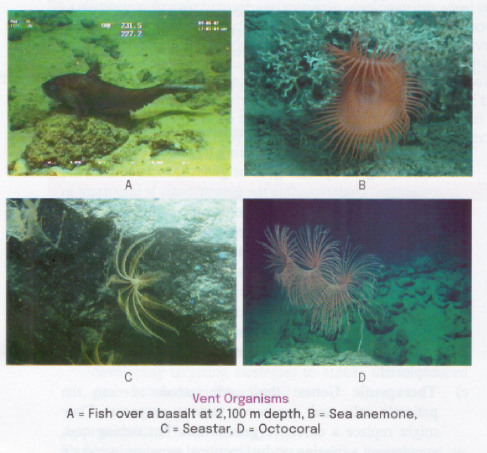
- Hydrothermal vents host unique biological ecosystems, where organisms like tubeworms, crabs, and shrimp thrive in extreme environments. These organisms rely on chemosynthesis to convert inorganic compounds into energy.
- Some vent sites are designated as Marine Protected Areas to preserve these ecosystems, and vent biology offers insights into early Earth conditions and the potential for life on other planets.
International Collaboration and Research
- Countries such as India, China, Germany, and South Korea are registered contractors for vent research and mining in the Indian Ocean. Collaborative efforts aim to reduce the costs and share expertise in deep-sea exploration.
- Future studies of hydrothermal vents could reveal more about plate tectonics, ocean basins, and deep-sea resources, providing further opportunities for mining and understanding Earth’s early history.
ARTICLE 7
Revolutionising Medicine: The Promises and Challenges of Gene Therapy
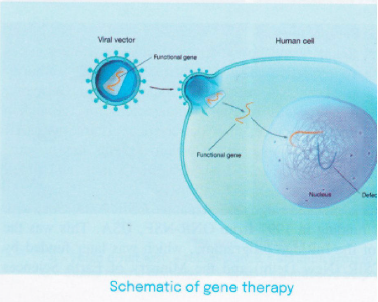
Gene Therapy: A New Era in Medicine
- Gene therapy has emerged as a transformative approach in medicine, offering solutions to both inherited and acquired diseases by targeting their genetic causes.
- By introducing DNA or RNA into a patient’s cells, gene therapy can restore lost functions, silence harmful proteins, or correct gene errors. This revolutionary treatment holds promise for numerous conditions, including hereditary disorders like cystic fibrosis and cancers, making it a key focus in modern healthcare research.
- After decades of trials and development in the U.S. and Europe, gene therapy has proven effective, signalling a shift toward more targeted medical treatments.

Gene Therapy Strategy and Requirements
- Understanding the Genetic Basis of Disease
Gene therapy starts with identifying the genetic root of a condition. This involves pinpointing faulty or missing genes responsible for a disorder. A thorough understanding of these genes is critical to designing an appropriate therapy. - Vector Systems
Therapeutic genes are delivered to patient cells using vectors, often modified viruses or synthetic nanoparticles. Common vectors include retroviruses, adenoviruses, lentiviruses, and non-viral options like polymers and liposomes, all developed to transport genetic material efficiently. - Therapeutic Genes
These genes can either replace defective ones, supplement missing ones, or introduce new genes that produce necessary proteins, enzymes, or RNA molecules, depending on the disease. - Delivery Methods
Gene therapy is administered through different delivery methods, such as intravenous, intramuscular, or targeted injections, depending on the condition, vector type, and target cells. - Target Cell Selection
Targeting the correct cells is crucial for successful therapy. Researchers must understand the disease biology and develop strategies to deliver genes precisely to the affected areas.
Approaches to Gene Therapy
- Gene Augmentation Therapy
This technique introduces functional versions of defective genes, particularly useful for single-gene disorders like cystic fibrosis and haemophilia. - Gene Suppression Therapy
It aims to suppress overactive genes using small RNA molecules like siRNA or antisense oligonucleotides, potentially treating conditions like ALS or certain cancers. - Gene Editing
Technologies like CRISPR-Cas9 enable precise DNA modification, offering the ability to correct mutations in genetic disorders like sickle cell disease and beta-thalassemia. - Ex Vivo vs. In Vivo Therapies
Ex vivo therapy modifies cells outside the patient’s body before reintroducing them, while in vivo therapy targets cells within the body directly, depending on the disease’s requirements.
Somatic vs Germplasm Gene Therapy
- Somatic Gene Therapy
This type is used for treating various diseases and doesn’t affect future generations, as it doesn’t alter sperm or egg cells. It is already being tested in clinical trials for genetic disorders, cancer, and infectious diseases. - Germplasm Gene Therapy
This therapy, which alters genetic material passed to future generations, is still in research due to ethical concerns. There is worry about its misuse in creating “designer babies” and potential unforeseen health impacts on future generations.
Gene Therapy vs Cell Therapy
- Gene Therapy
Gene therapy transfers genetic material to cells to correct or modify gene expression. This can occur either within the body (in vivo) or outside the body (ex vivo). Examples include T-cell therapy for cancer and treatments for haemophilia. - Cell Therapy
Cell therapy involves introducing new or modified cells into the body to replace damaged ones or enhance immune responses. It is used in treating heart disease, knee osteoarthritis, and conditions like Duchenne muscular dystrophy.
Viral Vectors: Key to Delivery
- Adeno-Associated Virus (AAV)
AAV is a popular viral vector known for delivering genes to various cell types with low immune responses, showing promise in treating inherited retinal diseases. - Lentiviruses
Lentiviruses can integrate genetic material into a host’s genome, making them suitable for long-term therapy. They are being used in trials for diseases like Severe Combined Immunodeficiency (SCID).
Future of Gene Therapy
- As gene therapy continues to evolve, it holds the potential to revolutionize healthcare, offering treatments for a broad range of conditions.
- With ongoing research, clinical trials, and advancements in technologies like CRISPR, gene therapy may provide cures for previously untreatable diseases, making it a cornerstone of modern medical science.
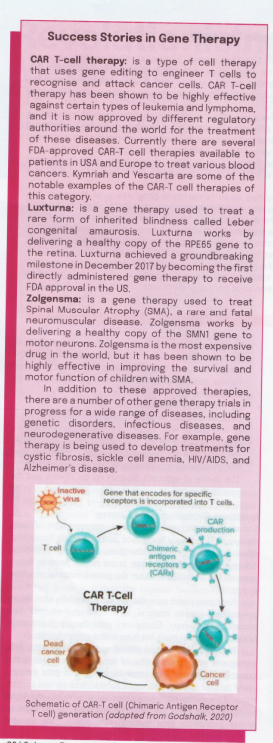
ARTICLE 8
E-WASTE MANAGEMENT: Converting Problem into Opportunity
The Rise of E-Waste in the Digital Age
- Technological advancements have brought electrical and electronic equipment (EEE) into every facet of daily life. However, the short lifespan and lack of reliability of many devices have led to an unprecedented rise in e-waste, creating serious environmental and health hazards.
- The surge in broken or discarded electronic items underscores the need for better e-waste collection and management. India, like many other countries, is witnessing a rapid increase in e-waste.
- While Europe and the U.S. have made progress in recycling, the global e-waste problem is seen as an opportunity to recover valuable materials, converting waste into wealth.
Exponential Growth in E-Waste Generation
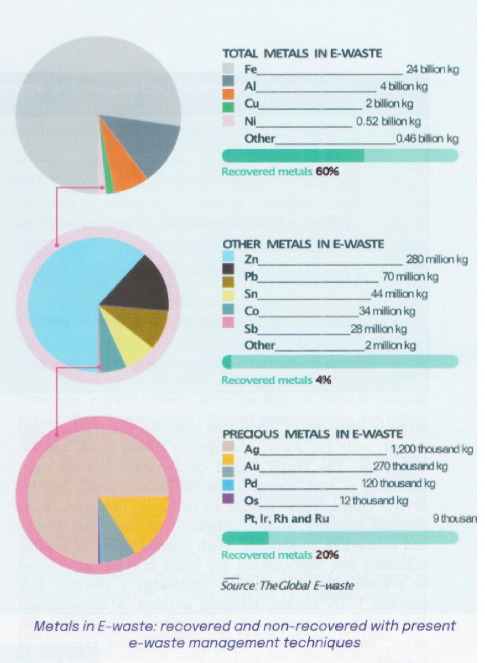
- Global economic development has fueled the production of EEE, leading to a sharp rise in e-waste. The volume of EEE placed on the market grew from 62 billion kg in 2010 to 96 billion kg in 2022, with projections reaching 82 billion kg annually by 2030.
- This surge is due to the widespread adoption of technology, including immersive digital innovations, most of which rely on electronics. The “use-and-throw” culture, along with the non-repairability of many products, contributes to this growing burden.
- The Global E-waste Monitor 2024 report highlights this alarming trend, calling for urgent global action.
Defining E-Waste and Regulations
- E-waste encompasses discarded electrical and electronic equipment, including solar photovoltaic modules and parts rejected from manufacturing or repair processes, as per India’s E-Waste (Management) Rules 2022.
- E-waste refers to items dependent on electricity or electromagnetic fields for functionality. However, not all electrical items qualify as EEE; for example, batteries and some automotive components are classified under different waste streams.
- Understanding what constitutes EEE is crucial for effective waste management and regulatory compliance.
Environmental and Health Threats of E-Waste
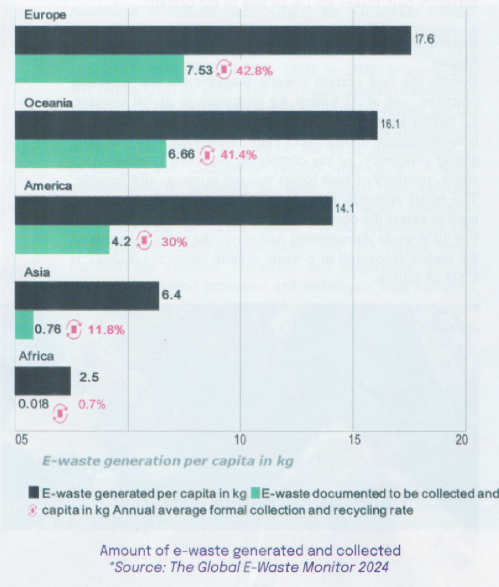
- E-waste has become a global environmental and health hazard. The rapid increase in e-waste generation is driven by the transition from durable to disposable electronics.
- For instance, the typical mobile phone is discarded within two years in China, Europe, and the U.S. India ranks third globally in e-waste production, generating 3.2 million metric tons annually.
- Although India’s per capita e-waste is lower than the global average, the cumulative impact is significant. In contrast, Europe has taken strides in recycling, with a 42.8% recycling rate, while the U.S. lags behind in managing its e-waste output.
Urgency of Addressing E-Waste Challenges
- E-waste presents a major challenge for both the environment and human health. Without proper segregation, e-waste mixes with household waste, posing toxic risks to waste handlers and ecosystems.
- The global increase in e-waste demands immediate attention to implement sustainable practices, increase recycling efforts, and shift towards a circular economy that can recover critical metals and reduce the environmental footprint of discarded electronics.
- Addressing this issue will require coordinated global efforts to regulate, collect, and recycle e-waste effectively.
ARTICLE 9
Dark Matter’s Role in Dinosaur Extinction: A Possible Cosmic Connection?
The Mysterious Tunguska Event of 1908
- The Tunguska Event of 1908 remains one of the most dramatic events in Earth’s modern history. A massive explosion flattened over 2,000 square kilometers of forest in Siberia, producing shock waves measured at 5.0 on the Richter scale.
- Thousands of reindeer were killed, and the energy released was equivalent to 1,000 times that of the Hiroshima explosion.
- Scientists believe the event was caused by the disintegration of a comet or asteroid high in the atmosphere, but the exact details remain a mystery.
Parallels with the Dinosaur Extinction
- The Tunguska Event shares similarities with another cataclysmic event that occurred 66 million years ago, leading to the extinction of the dinosaurs.
- In the 1970s, Walter and Luis Alvarez discovered a clay layer rich in iridium, an element rare on Earth but abundant in extraterrestrial objects, supporting the theory that a massive comet or asteroid impact caused the extinction.
- This clay layer, known as the K-Pg boundary, has been found worldwide, dating back to the same period when dinosaurs vanished.
Cosmic Impacts and Earth’s Vulnerability
- Earth is constantly bombarded by extraterrestrial material, with about 50 tons of debris entering the atmosphere daily. Massive objects, like asteroids and comets, occasionally collide with Earth, as evidenced by events like Tunguska and the dinosaur extinction.
- Asteroids, which come from the asteroid belt, and comets, which originate in the outer solar system, travel at different speeds, making it difficult to distinguish between the two when studying impact events.
- The Yucatan Peninsula crater, linked to the dinosaur extinction, could have been caused by either an asteroid or comet.
The Role of Dark Matter in Cosmic Collisions
- One intriguing hypothesis suggests that dark matter, which makes up 85% of the universe and interacts only through gravity, might influence these cosmic collisions.
- Dark matter’s gravitational pull could disturb the Oort Cloud, a distant region filled with comets, sending some toward Earth.
- The periodicity of impacts in Earth’s history, approximately every 35 million years, might be explained by these gravitational disturbances as the solar system moves through the Milky Way galaxy, encountering varying matter densities.
Periodic Comet Showers and Future Impacts
- Historical observations, like Halley’s Comet, which reappears every 75-76 years, suggest that periodic comet showers could be responsible for some of Earth’s past impacts.
- As the solar system passes through regions of high density, it may trigger a cycle of comet impacts.
- Modern technologies, such as the GAIA satellite, are mapping stars and their motions with unprecedented accuracy, offering insights into whether dark matter’s gravitational influence played a role in ancient cosmic collisions.
Dark Matter: A Silent Force Shaping Earth’s History
- Dark matter, though invisible, may hold the key to understanding some of Earth’s most dramatic events, including the extinction of the dinosaurs. Its gravitational influence could be periodically sending comets toward Earth, shaping the planet’s history.
- As we continue to explore these cosmic mysteries, dark matter may reveal more about its role in past and future impacts that have the potential to reshape life on Earth once again.
ARTICLE 10
LI-FI: ILLUMINATING THE FUTURE OF WIRELESS COMMUNICATION
Introduction to Li-Fi Technology
- Light Fidelity (Li-Fi) is an innovative wireless communication technology that uses light to transmit data, offering significant advantages over traditional Wi-Fi.
- Introduced by Professor Harald Haas in 2011, Li-Fi uses LED (Light Emitting Diode) bulbs to modulate light, enabling data transmission.
- This concept has garnered widespread interest due to its potential to revolutionize wireless communication with faster speeds and more secure connections.
How Li-Fi Works
- Li-Fi operates by modulating visible light from LED bulbs, which are already common in homes, offices, and vehicles.
- The light intensity is modulated at extremely high speeds, encoding data in binary form (using on-off patterns to represent ones and zeros).
- Photodetectors in devices like smartphones or tablets capture the modulated light, which is then decoded back into the original data, allowing seamless data transmission.
Key Advantages of Li-Fi
Exceptional Speed: Li-Fi can achieve data transfer speeds of up to 224 Gbps, far exceeding the capabilities of traditional Wi-Fi. This makes it suitable for high-bandwidth applications like streaming and large data transfers.
Enhanced Security: Since light signals cannot penetrate walls, Li-Fi provides enhanced security by limiting the ability of external hackers to intercept the signal.
Energy Efficiency: Li-Fi utilizes existing LED lighting infrastructure, reducing the need for additional power consumption. The dual-purpose nature of LEDs (lighting and communication) makes Li-Fi an energy-efficient option.
No Spectrum Interference: Li-Fi operates in the visible light spectrum, avoiding the crowded radio frequency spectrum used by Wi-Fi. This reduces interference and enhances reliability.
No Radio Licensing: Unlike Wi-Fi, Li-Fi does not require spectrum licensing, which simplifies deployment and reduces regulatory challenges.

Challenges and Limitations
Despite its potential, Li-Fi faces certain challenges:
Line of Sight Requirement: Li-Fi requires a direct line of sight between the light source and the receiver, limiting its use in environments where obstructions are common.
Shorter Range: Li-Fi’s effective range is shorter than Wi-Fi, necessitating the installation of more access points or light sources, which can increase costs.
Sensitivity to Light Conditions: Changes in lighting, such as ambient light or shadows, can affect Li-Fi’s performance.
Vulnerability to Attacks: Li-Fi can be susceptible to attacks like signal spoofing, jamming, and denial of service (DoS), although authentication mechanisms can mitigate these risks.
Initial Setup Costs: Setting up a Li-Fi infrastructure requires specialized LED bulbs and photodetectors, making initial deployment more expensive.
Applications of Li-Fi

Li-Fi’s unique attributes make it suitable for various applications:
Indoor Navigation: Li-Fi can enhance location-based services in places like malls, airports, and museums through precise indoor positioning.
Healthcare: Li-Fi provides reliable, high-speed communication between medical devices, improving patient care and monitoring.
Vehicular Communication: Li-Fi can enhance vehicle-to-vehicle communication, contributing to the development of autonomous vehicles and intelligent transportation systems.
Aviation: In-flight entertainment and communication can benefit from Li-Fi’s high-speed data transmission.
Underwater Communication: Li-Fi’s ability to operate in visible light makes it suitable for underwater communication, facilitating marine research and exploration.
Smart Cities: Li-Fi can be integrated into streetlights to create a network of smart lighting and wireless connectivity in urban areas.
The Future of Li-Fi
- Li-Fi is still in its early stages but has immense potential to complement or even replace traditional Wi-Fi in certain applications.
- With continuous research and development aimed at addressing its limitations, Li-Fi could become a transformative technology for industries requiring high-speed, secure, and interference-free communication.
- The future may see Li-Fi revolutionizing areas such as healthcare, industrial automation, and secure data transfer, improving how we connect in the digital world.
ARTICLE 11
Plants showing more carbon-absorbing power
The Rise of Global Warming and Climate Change
- The emission of greenhouse gases (GHGs), particularly carbon dioxide, has accelerated the phenomenon of climate change, resulting in global warming.
- This increase in the Earth’s temperature has far-reaching consequences for all life forms. Glaciers are melting, leading to rising sea levels that threaten to submerge coastal regions.
- Additionally, the world has witnessed extreme weather events like floods, droughts, and wildfires, along with temperature extremes ranging from intense heat to severe cold.
- The impact extends beyond environmental damage, as global warming also threatens food production and public health. Rising temperatures combined with increased humidity pose serious health risks, potentially leading to fatal outcomes.
Health Impacts and the Threat of Pandemics
- Global warming has contributed to the proliferation of allergen-producing plants, leading to a rise in allergic diseases and chronic illnesses. The changing climate also increases the risk of pandemics, as warmer temperatures may give rise to new, mysterious viruses.
- Moreover, conditions like high heat, humidity, and increased rainfall create ideal environments for ticks and other carriers of infectious diseases like Lyme disease.
- As the effects of climate change intensify, the threat to public health continues to grow.
Global Efforts to Combat Climate Change
- In response to the climate crisis, the Paris Agreement of 2015 aimed to limit the global temperature rise to no more than 1.5°C above pre-industrial levels.
- However, despite global commitments, progress has been slow. By 2023, the global temperature had risen by 1.08°C, making it the hottest year on record.
- According to climate experts, 2024 is expected to be even warmer, with the 1.5°C threshold being increasingly difficult to avoid.
- World leaders and experts, including Secretary-General Celeste Saulo of the World Meteorological Organization, have stressed the urgency of reducing greenhouse gas emissions and accelerating the transition to renewable energy sources to mitigate further damage.
The Time Limit for Reducing Carbon Emissions
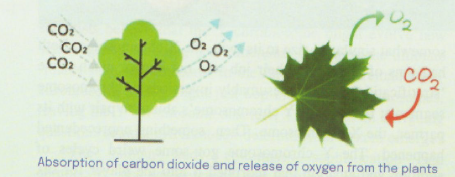
- Scientists have calculated that humanity has a limited window to prevent irreversible damage from climate change.
- A study published in Nature Climate Change by researchers Chris Smith and Robin Lamboll estimates that, to maintain a 50-50 chance of limiting global warming to 1.5°C, humanity can only emit an additional 250 billion metric tons of carbon dioxide.
- At current emission rates, this would allow only six more years of business-as-usual before drastic changes are required to reach net-zero emissions.
The Role of Plants in Combating Climate Change

- While climate change is a serious global threat, there is a silver lining: research suggests that plants have increased their capacity to absorb carbon dioxide.
- A study published in Science Advances in March 2023 shows that plants are adapting to the changing climate by improving their ability to “fix” carbon, or convert it into sugars through photosynthesis. This natural process helps mitigate climate change by reducing atmospheric carbon.
- However, experts warn that while plants play an essential role, they cannot offset the need for drastic reductions in fossil fuel emissions. Planting trees is an important strategy, but it cannot replace the urgent need for a shift to renewable energy.
Conclusion: No Easy Solutions
- While the resilience of plants offers hope in the fight against climate change, it is clear that nature alone cannot solve the problem.
- As experts have highlighted, reducing greenhouse gas emissions and transitioning to renewable energy sources are critical steps that must be taken immediately.
- Time is running out, and without swift and decisive action, the consequences of global warming and climate change will continue to worsen, affecting all aspects of life on Earth.
ARTICLE 12:
Men Losing it? The Y Chromosome’s Evolutionary Struggle
A Journey into the Cell: Discovering the Chromosomes
- Imagine shrinking down to the size of a blood cell and entering a fantastical world within the human body. You land in the nucleus of a cell, a vibrant realm reminiscent of the Wakandan technology from Black Panther.
- Here, chromosomes — the blueprints of human life — are stored. As you navigate this microscopic world, you meet a friendly chromosome named X and her partner Y.
- Together, they hold the genetic code responsible for building the human body, with X carrying specific information and Y playing a critical role in determining male traits.
The Evolution of the Y Chromosome: Shrinking Over Time
- The Y chromosome, once similar in size to its partner X, has been shrinking over millions of years, leading scientists to question its future.
- Around 180 million years ago, both X and Y chromosomes were packed with genes, but over time, structural changes in Y’s DNA caused it to lose its ability to pair with X.
- This led to a dramatic transformation, turning Y into the key player in determining male sex.
- The acquisition of the SRY gene on the Y chromosome initiated male development by triggering the formation of testes, a critical function for sex determination.
The Vulnerable Y Chromosome: Is It Facing Extinction?
- Despite its essential role in sex determination and male fertility, the Y chromosome is in a state of decline. It contains far fewer functional genes than the X chromosome, leaving it vulnerable to genetic degradation.
- Some Y genes have already migrated to the X chromosome to ensure their survival, but this raises an important question: Is the Y chromosome on the path to extinction?
- While some scientists speculate that the Y chromosome could evolve new functions, others suggest that it may eventually become obsolete, leading to the emergence of a new system of sex determination.
Rethinking Sex Determination: Beyond the XX and XY Binary
- The traditional understanding of sex determination as a binary system (XX for females and XY for males) has been challenged by recent discoveries.
- Science now recognizes that sex and gender exist on a spectrum, with conditions like Klinefelter syndrome (XXY) and Turner syndrome (XO) illustrating the complexity of sex determination.
- Additionally, mutations in genes such as SRY or the Androgen Receptor (AR) gene can result in intersex characteristics, where individuals may not conform to typical male or female traits.
- These findings highlight the intricate interplay of genes, hormones, and environmental factors in shaping sexual identity.
The Future of the Y Chromosome: Lessons from the Amami Spiny Rat

- In a surprising discovery, scientists found that the Amami spiny rat, a rodent species, has completely lost its Y chromosome and SRY gene. Despite this, male rats still develop normally, thanks to a new regulatory region on chromosome 3 that activates the SOX9 gene, which triggers testis formation.
- This suggests that sex determination can evolve independently of the Y chromosome, offering hope that even if the Y chromosome disappears, human reproduction may continue through alternative mechanisms.
- While the future of sex determination remains uncertain, embracing the diversity of sexual identities is key to creating a more inclusive world.
ARTICLE 13
Change the Way you Think: Change your Gene Expression
The Impact of Lifestyle Choices on Mental and Physical Health
- Our everyday lives are filled with choices that influence both our mental and physical health. Poor diet, lack of exercise, work-related stress, and traumatic experiences, such as PTSD, can heighten psychological stress.
- This stress not only affects emotional balance but also causes hormonal imbalances and structural changes in our DNA. These changes, compounded by toxic thinking and negative thought patterns, contribute to a harmful cycle of stress.
- Understanding the genetic and environmental interplay through epigenetics offers insights into how stress can reshape our DNA and influence our overall health.
Epigenetics: Understanding Gene Modifications

- Epigenetics, the study of chemical modifications attached to DNA, explains how external factors, such as stress, can alter gene function. These modifications, which include the addition of methyl (-CH₃) or acetyl groups, affect gene expression without changing the DNA sequence itself.
- Studies have shown that stress during critical life stages, such as early childhood or adolescence, can lead to epigenetic changes in key neurotransmitter systems, potentially leading to conditions like depression or anxiety.
- DNA methylation and histone modifications are emerging as important biomarkers for diagnosing and treating mental health disorders.
How DNA Modifications Affect Gene Expression
- DNA carries genetic information in units called genes, which interact with the environment to shape an individual’s identity. Epigenetic modifications play a crucial role in regulating when and how genes are expressed.
- In some cases, chemical changes, such as the methylation of cytosine (a DNA building block), can turn genes off. This occurs when methyl groups block proteins from binding to DNA, altering the gene’s function.
- These modifications can be passed down through generations, highlighting how environmental influences, including stress, can have lasting genetic effects.
Epigenetic Changes in Mental Health Disorders
- Unusual modifications in the genetic code, particularly in the central nervous system, can lead to neuropsychiatric disorders.
- For example, increased DNA methylation has been observed in the brains of individuals who have committed suicide, underscoring the profound impact of negative thoughts on genetic material.
- Additionally, new chemical modifications, such as N(6)-methyladenine, have been linked to neuropsychiatric conditions. While these changes may seem permanent, they are potentially reversible, offering hope for mitigating the harmful effects of stress on mental health.
The Power of Positive Thinking: Reversing Epigenetic Changes
- One of the most intriguing aspects of epigenetic changes is their potential reversibility. By minimizing environmental stressors and focusing on positive thinking, individuals can influence their genetic makeup in beneficial ways.
- Practices like mindfulness meditation, yoga, and tai-chi have been shown to foster well-being and may even lead to favorable epigenetic modifications.
- Positive thinking and mindfulness can help prevent disease and promote health, and these beneficial genetic changes can also be passed on to future generations.
- Thus, how we choose to live and think not only affects our own health but also the well-being of our descendants.
The Role of Environment in Gene Expression
- Epigenetic changes play a crucial role in regulating gene expression, with environmental factors like stress significantly altering these genetic signatures.
- However, meditation, positive thinking, and other mindfulness practices can reverse the detrimental effects of a stressful environment.
- By embracing these practices, individuals can protect their mental health and ensure that their genetic legacy remains positive for future generations.
ARTICLE 14
How Animals Take Care of their Eggs
The Necessity of Reproduction and Survival Strategies
- Reproduction is essential for the survival of all animal species, ensuring that their line continues. Not all animals care for their eggs or offspring, and species have developed different strategies to ensure survival.
- Some lay many eggs, relying on quantity to increase the chances of survival, while others focus on caring for a smaller number of offspring. These strategies represent evolutionary achievements, with some animals, like orangutans and penguins, exhibiting prolonged parental care to maximize the survival of their young.
Unique Egg-Laying and Parental Behaviors in Animals

- Different species have evolved diverse ways of caring for their eggs. Earthworms use a specialized organ called the clitellum to create cocoons for their eggs, while female cockroaches produce protein-based egg cases (oothecae) to protect their eggs.
- In some species, such as the Belostoma bug, males take on the role of egg caregivers. In scorpions, the female carries fertilized eggs inside her body until they hatch.


- Each species has developed specialized methods to ensure the protection and nourishment of their eggs.
Egg Encapsulation and Protection Strategies
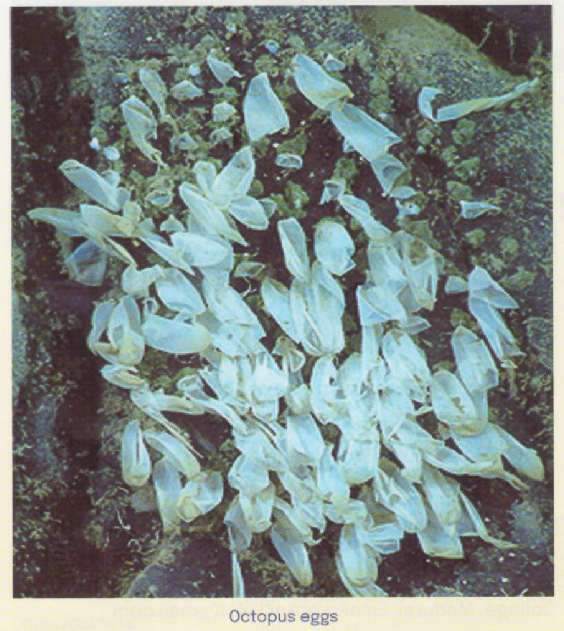
- Some species, like the gastropod Ianthina and the cephalopod Sepia, use encapsulation to protect their eggs. In Ianthina, eggs are attached to a floating raft created by the female, while in Sepia, eggs are covered with a special ink to camouflage and protect them.
- These encapsulation methods offer advantages, such as providing space for development and protecting eggs from predators.
- In the deep sea, the Octopus Graneledone boreopacifica exhibits an extraordinary level of parental care, guarding its eggs for over four years without feeding, ensuring their survival.
Fish and Amphibian Parental Behaviors

- Fish and amphibians display various parental behaviors to protect their eggs from predators, which are a major threat due to the nutritional value of fish eggs.
- In some species of sharks and skates, egg cases are deposited outside the body after fertilization, providing protection to the developing embryos. Seahorses are unique, with males carrying eggs in a brood pouch, ensuring their safety.
- Amphibians, like frogs and caecilians, exhibit remarkable parental care, with males or females carrying eggs on their bodies or in specialized pouches until they hatch.
Parental Care in Reptiles and Mammals
- Reptiles, such as marine turtles, show a high level of maternal care, with females laying eggs in pits on sandy beaches and burying them to protect against predators and environmental conditions.
- In contrast, mammals are mostly viviparous, meaning they give birth to live young, with maternal care being essential.
- The platypus, an egg-laying mammal, constructs protective nests for its eggs, ensuring the survival of its offspring by creating barriers against predators and providing nourishment through maternal milk.
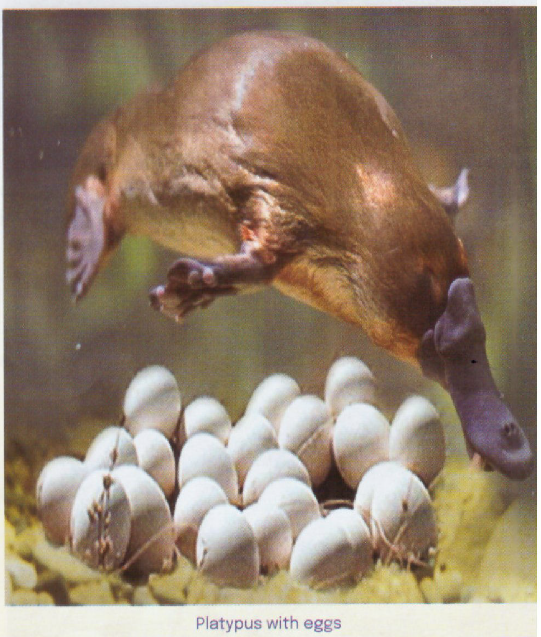
The Evolutionary Significance of Parental Care
- Parental care is not exclusive to mammals; it is well-developed in many lower vertebrates.
- This evolutionary adaptation ensures the protection and survival of offspring, with species displaying a wide range of behaviors and structures to care for their young.
- There is also variation in the level of parental investment between species and even between sexes, with some species relying more on females, others on males, or sharing the responsibility equally. The ultimate goal across all species is the protection and survival of their young.
ARTICLE 15
Vegetable sheep, a wolly wonder of nature!

The Unique “Vegetable Sheep” of New Zealand
- Amid the rugged terrains of New Zealand, where harsh winds sweep through the grasslands and rocky formations, a fascinating plant species thrives — the vegetable sheep.
- Despite its peculiar name, this plant, scientifically known as Raoulia eximia, is not an animal but a member of the Asteraceae family.
- Its dense, woolly foliage forms compact clusters resembling a flock of sheep grazing on the mountainside, which makes it a captivating sight in its natural habitat.
Adaptations to Harsh Mountain Environments
- The vegetable sheep is well adapted to its rugged environment. Its cushion-like shape and small, densely packed leaves help it retain water, endure strong winds, and survive in rocky terrains with minimal soil.
- The plant’s fuzzy appearance, which mimics sheep’s wool, insulates it from cold and provides protection from predators.
- Beneath the surface, decayed leaves form a peat-like layer that holds moisture, further aiding its survival in the tough mountain climate.
Ecological Significance
- This resilient plant plays a vital role in the alpine ecosystem. Its dense growth provides habitat and shelter for small animals and insects, while its ability to stabilize soil helps prevent erosion in the mountainous landscape.
- Although it appears fragile, the vegetable sheep is incredibly hardy, capable of thriving for many years in the inhospitable environment of New Zealand’s highlands.
Cultural Importance and Traditional Uses

- The indigenous Maori people of New Zealand hold the vegetable sheep in high regard, viewing it as a symbol of strength and versatility. Parts of the plant are used in traditional Maori healing practices, underscoring its cultural and medicinal significance.
- Beyond its practical uses, the vegetable sheep remains a beloved natural feature in the region, admired for its beauty and resilience.
A Captivating Survivor
- With its woolly, sheep-like appearance and ability to survive in harsh conditions, the vegetable sheep is a captivating plant species.
- Its role in both the ecosystem and Maori culture highlights its importance in New Zealand’s natural heritage, making it an iconic feature of the country’s alpine landscapes.
NEWS IN BRIEF:
1) MeDevlS: A Global Repository on Medical Devices
- The World Health Organization (WHO) developed the first global open-access platform called MeDevIS (Medical Devices Information System).
- This online tool supports governments, regulators, and users in selecting, procuring, and using medical devices for diagnostics and treatment. MeDevIS includes information on 2301 types of medical devices for a range of health issues, including reproductive health, noncommunicable diseases, and infectious diseases like COVID-19.
- The platform helps national policymakers update procurement lists and supports progress toward universal health coverage.
2) Smart Soil to Capture Water directly out of Thin Air
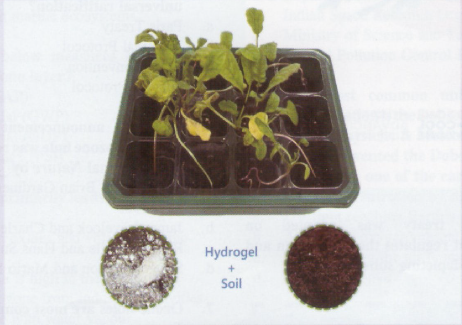
- Researchers from the University of Texas at Austin have developed an innovative type of soil designed to make irrigation more sustainable by capturing water from the air to hydrate plants.
- This modified soil also releases fertilizer in a controlled manner, reducing excessive nutrient exposure, a significant contributor to environmental pollution.
- The soil’s water-capturing ability comes from a hydrogel material, which demonstrated a 138% increase in plant stem length during experiments. However, the effectiveness of the hydrogel depends on the atmospheric humidity. The research was published in ACS Material Letters.
INFOGRAPHICS
